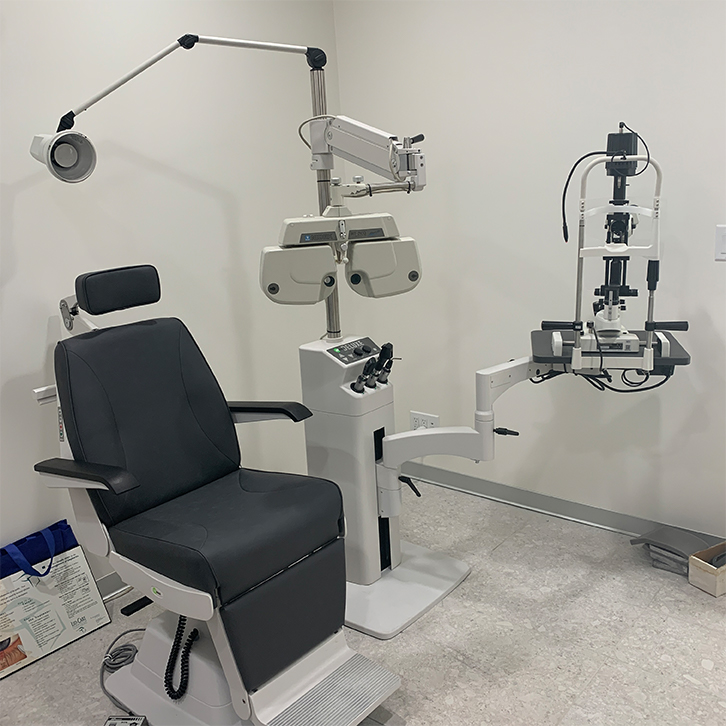Many people suffer from colour blindness, a condition affecting how the eyes perceive colour. Someone with colour blindness cannot see the world as it’s intended. However, technology like EnChroma lenses can help.
Continue reading to learn more about EnChroma lenses, including what they are and how they work.
How Does Your Colour Vision Work?
Colour feels like something we naturally see, but it’s actually the work of your brain perceiving wavelengths of light. When light hits an object, the object absorbs some of the light and reflects the rest. This reflected light enters your eye and travels until it reaches the retina, a layer of nerve cells in the back of your eye.
Your retina has 2 types of cells that detect and respond to light, known as rods and cones. Your cones contain pigments that help detect colours (red, green, and blue). These different types of cones are sensitive to different light wavelengths.
Reflected light from an object gets a response from your cones, which send a signal to the brain. Your brain then interprets this information and creates the specific colour you see. When there are issues with your cones, you experience colour blindness.
What Is Colour Blindness?
Colour vision deficiency (colour blindness) occurs when the photoreceptors (cones) cannot identify colours. These cones are in the retina, lacking the light-sensitive pigments to recognize colours. Colour blindness typically occurs when there is an overlap of cones within the eye.
Someone with colour blindness cannot perceive certain parts of the light spectrum. They may struggle to see red, green, or blue light. The severity of this condition can range from mild to severe.
Several possible causes for colour blindness exist, such as:
- Inheritance of colour blindness at birth
- Certain diseases
- Certain medications
- Ageing
- Exposure to chemicals
Someone with normal colour vision is known as trichromacy. There are 3 possible types of colour blindness.
Anomalous Trichromacy
Someone with anomalous trichromacy has colour blindness to some extent. All 3 of the cone types can perceive colour, but one of these cones is unaligned.
Someone may have a reduced sensitivity to red, green, or blue light. This sensitivity depends on the type of anomalous trichromacy.
The types of anomalous trichromacy include:
- Protanomaly: Reduced sensitivity to red light
- Deuteronomy: Reduced sensitivity to green light
- Tritanomaly: Reduced sensitivity to blue light
Dichromacy
Someone with dichromatic colour vision only has 2 types of cones that can perceive colour. In short, they cannot see colour, but this is a simple way to explain this condition. Someone is unable to perceive a specific section of the light spectrum.
There are 3 types of dichromacy:
- Protanopia: Inability to receive red light
- Deuteranopia: Inability to perceive green light
- Tritanopia: Inability to perceive blue light
Monochromacy (Achromatopsia)
Someone with monochromatic vision can see no colour at all, causing their world to consist of different shades of grey. Someone’s colour perception may range from black to white, similar to an old television. Achromatopsia, known as total colour blindness, is a rare condition that only one person in every 33,000 experiences.
While there is no cure for colour blindness, today’s technology can help you perceive colours as they were intended. One possible way to do this is with EnChroma lenses, but what do these lenses do?

What Are EnChroma Lenses?
EnChroma lenses help someone with colour blindness see all wavelengths of light. The lenses used in EnChroma glasses work by selectively filtering specific wavelengths of light at the point where the eyes become confused. EnChroma lenses help alter your cones to create a greater difference in colour perception, allowing you to see colours correctly.
EnChroma lens technology increases the contrast between the red and green colour signals in your eyes, helping you see the world more vibrantly. While EnChroma lenses can only temporarily improve your colour vision when you wear these glasses, they are still a beneficial technology.
Do EnChroma Lenses Work for Every Form of Colour Blindness?
While EnChroma glasses are helpful if you have colour blindness, they are only effective for a specific form of this condition. This technology is for anyone with anomalous trichromacy, which accounts for approximately 4 out of 5 cases of colour blindness.
The most common types of anomalous trichromacy are protanomaly and deuteranomaly. These are different forms of red-green colour blindness.
Your Eye Doctor Can Help
If you live with colour blindness, EnChroma lenses may be right for your needs. They can help you see a full range of colours. However, this technology is only for certain forms of colour blindness.
If you’re interested in EnChroma glasses, visiting your optometrist can help. They can determine if these lenses can benefit your vision. Contact your eye doctor if you’re interested in colour blindness-correcting glasses.



















